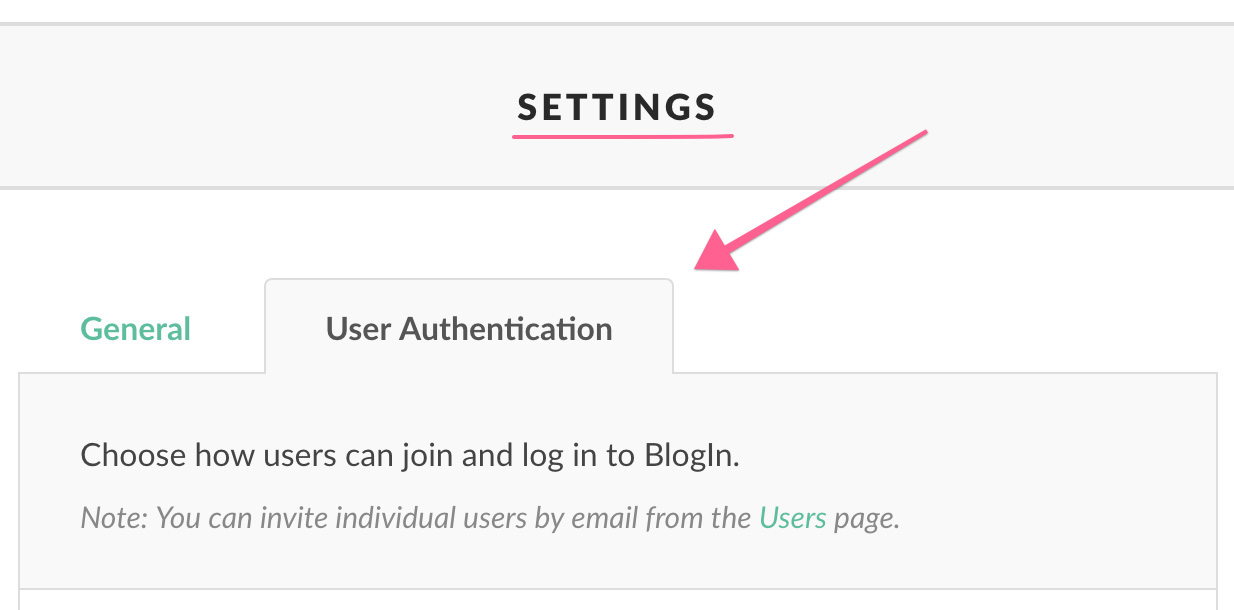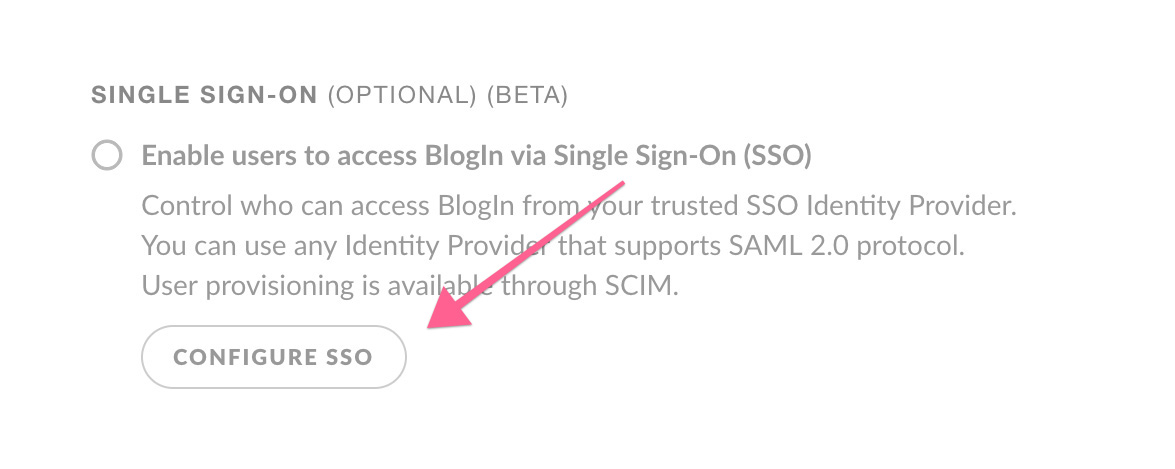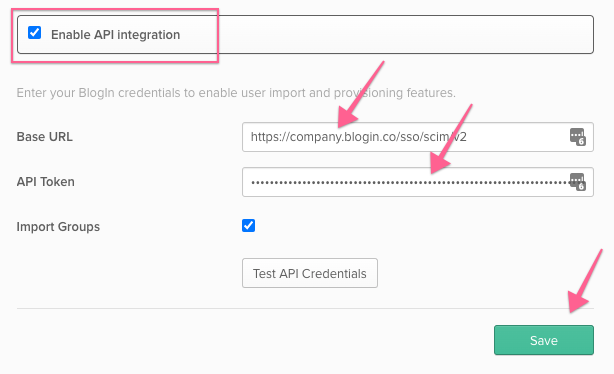User provisioning allows you to use an external user directory (identity provider), such as Okta, to manage users in your BlogIn account.
Prerequisites
BlogIn supports user provisioning with an identity provider that supports SCIM 2.0 protocol, such as Okta, Azure AD or Google.
User provisioning via SCIM is available to all BlogIn blog accounts, but you must be an Administrator of your blog to be able to set up and configure User provisioning for your blog.
You also must have sufficient privileges on the Identity provider side to configure User provisioning with BlogIn (usually administrator role is required).
Supported operations
BlogIn supports the following User provisioning operations:
- Create Users
- Update User Attributes
- Deactivate Users
- Import Users
- Import Groups
- Group Push
- Password Sync
Step 1: Enable User provisioning on BlogIn
Log in to your BlogIn account and go to Settings in the sidebar on the left and switch to the User Authentication tab.

Scroll down and click on the Configure SSO button.

Switch to the User provisioning tab and change User provisioning status to On.

Click the Save changes button.
Upon first save, the Secret (bearer) token will be generated.
You will use the Base (Tenant) URL and Secret (Bearer) token values in the next step when configuring provisioning on Okta.
Step 2: Configure User Provisioning on Okta
Log in to Okta and add the BlogIn application.
From the application, click on the Provisioning tab and then click Configure API integration button.

Click the checkbox to Enable API Integration and use Base (Tenant) URL and Secret (Bearer) token from the previous step to configure user provisioning with your Blogin account.

Click Test API Credentials to confirm successful integration.
If the test is successful, click Save.
Known issues
N/A
